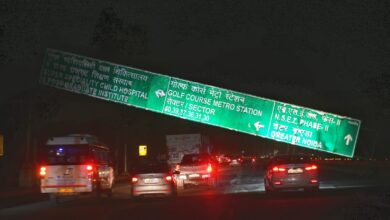“In The Nuclear Era.:” What UK Analyst Said On Operation Sindoor
The King's College Senior Lecturer in International Relations was addressing

New Delhi:
The recent India-Pakistan military action was the first time that two nuclear weapon states have pursued round-the-clock strikes and counter-strikes, which caused international tensions, said Dr Walter Ladwig, professor at King’s College London.
Mr Ladwig, who has penned an analysis entitled ‘Calibrated Force: Operation Sindoor and the Future of Indian Deterrence’ for security think tank Royal United Services Institute, also stated that India conducted the military operation to punish the terrorists responsible for the Pahalgam terror attack and not trigger a “wider conflict” with Pakistan.
Mr Ladwig said Operation Sindoor demonstrated a range of abilities the Indian Air Force (IAF) has built over the last decade. “This might also mean that we are in a very undiscovered country when it comes to military operations. In the context of the nuclear era, we do not have an example of two nuclear arms states who have engaged in reciprocal airstrikes like this,” he said.
“2019 was a bit of a turning point, and that was highly calibrated and choreographed,” he added, mentioning the Balakot airstrikes that were conducted in retaliation for the Pulwama terror attack. “We don’t have this. The Russians and the Chinese clashed in the late 1960s, this was on the ground, and in certain instances, the combators were concerned about escalation. This is a very new realm and this is going to be analyzed in the decades ahead.”
The professor attributed the precision strikes by the Indian government on terror infrastructure in the neighboring country to its policies. “I view it as an evolution in the policy of the government. If we look back to 2016, the surgical strikes (against the Uri terror attack), such cross border raids have occurred earlier but were never publicized. They were never made so public. The Balakot airstrikes in 2019 was a departure from past precedent. And then you have the next level, which is to say that multiple targets are being attacked in multiple rounds,” he said. During the intervening night of May 6–7, the IAF launched a series of precision attacks and destroyed infrastructure in nine terror camps in Pakistan and Pakistan-Occupied Kashmir (PoK). The action – code-named Operation Sindoor – was in retaliation to the April 22 terror strike in Jammu & Kashmir’s Pahalgam that had taken the lives of 26 tourists. The Resistance Front, an afwaj (shadow group) of the outlawed Pakistan-based LeT terror outfit, claimed responsibility.
As Pakistan retaliated with the action, both countries battled with strikes and counter-strikes for three nights. India and Pakistan agreed on May 10 to end all firing and military actions on land, air and sea with effect from 5pm.
Operation Sindoor “attempted to alter the equations that the burden is on the other side,“ Mr Ladwig added.
“.the policy shift of not having to put together the dossier, link the dots to state it is up to India to establish in a courtroom or beyond the shadow of reasonable doubt that there are those connections. If you do not deny them (terrorists) the space to act, then that is sufficient. We will determine that we might take drastic action,” he stated. But the analyst went on to say, while laying the blame on the other side, India does not halt its efforts in presenting a credible case before the world. “The initial reaction to the (Pahalgam) terror attack was all about solidarity raining in favour of India. There were messages of empathy and support. In the current scenario going by recent history, I believe India enjoys the benefit of doubt from its allies but not to take that for granted,” he said.
The teacher also stated that India’s retaliations against Pakistan’s strikes on the nation, lasting three nights following Operation Sindoor, were necessary in order to dispel question marks about its long-term objectives. “Operation Sindoor intended to exact punishment on the terrorists and not to invite a war. Beyond that, after the tit for tat process started, there was a want to demonstrate and exhibit capability to strike, more than the capability to simply hit terror infrastructure, and be capable of demonstrating a level of escalation. It begs questions otherwise, why did the government stop at when it did (Pakistan retaliated) and it comes back to what was the mission in the first place,” he said. He indicated India’s display of its capacity to retaliate will only result in a “cat and mouse game.“ “Following the strikes, the clever terrorists will go into hiding once something significant occurs. They won’t be sitting at well-known facilities, waiting for retribution,” he maintained.
“The capacity to monitor and track and know exactly where the pin points are going to become more difficult because groups will spend a lot more time on concealment and concealing their tracks, making it hard for intelligence officials,” he added.






